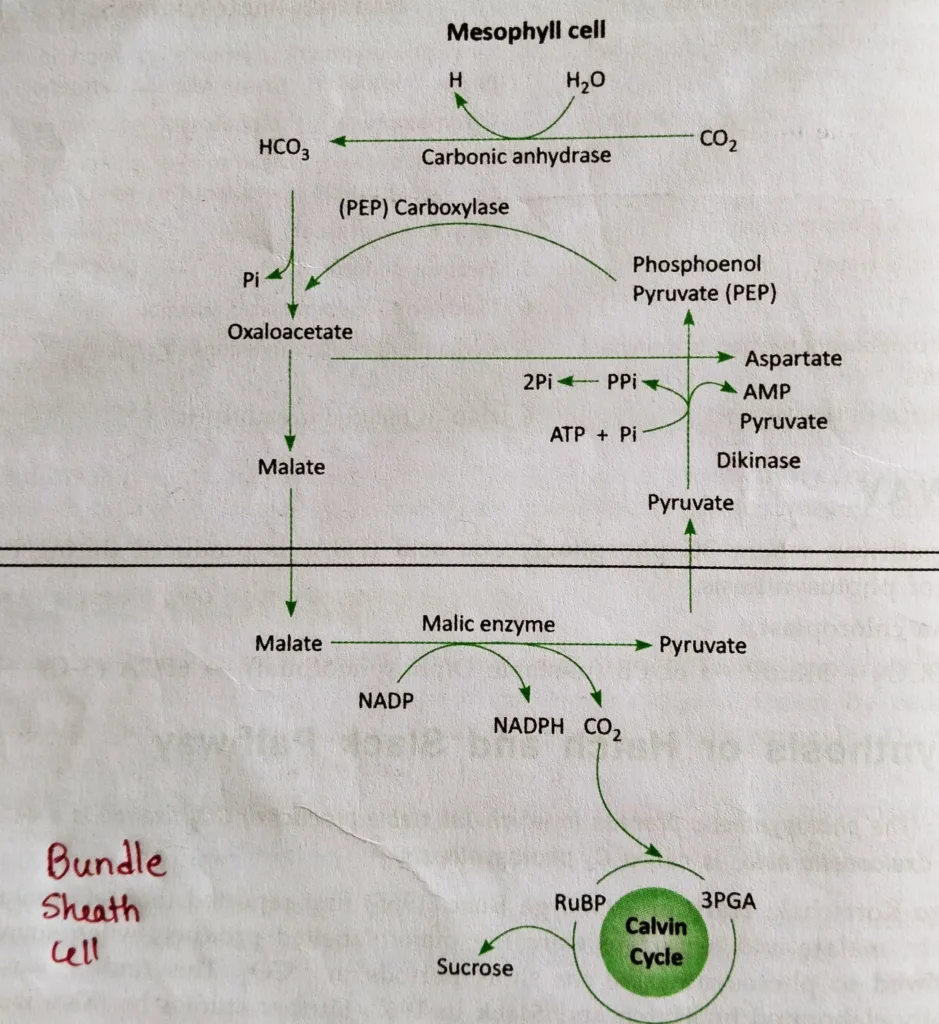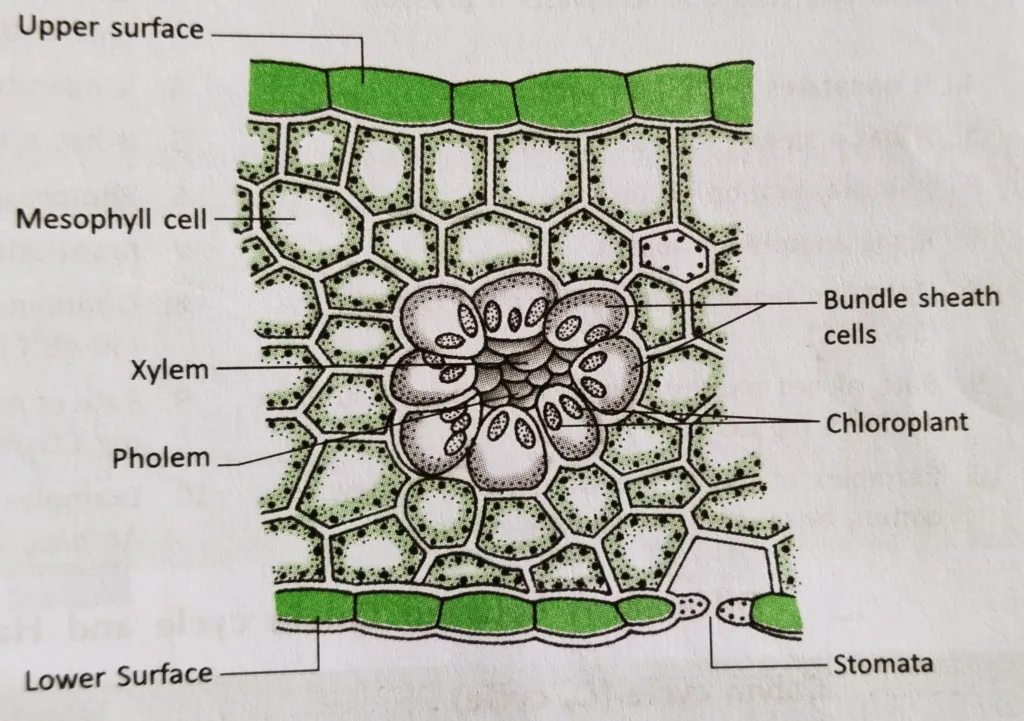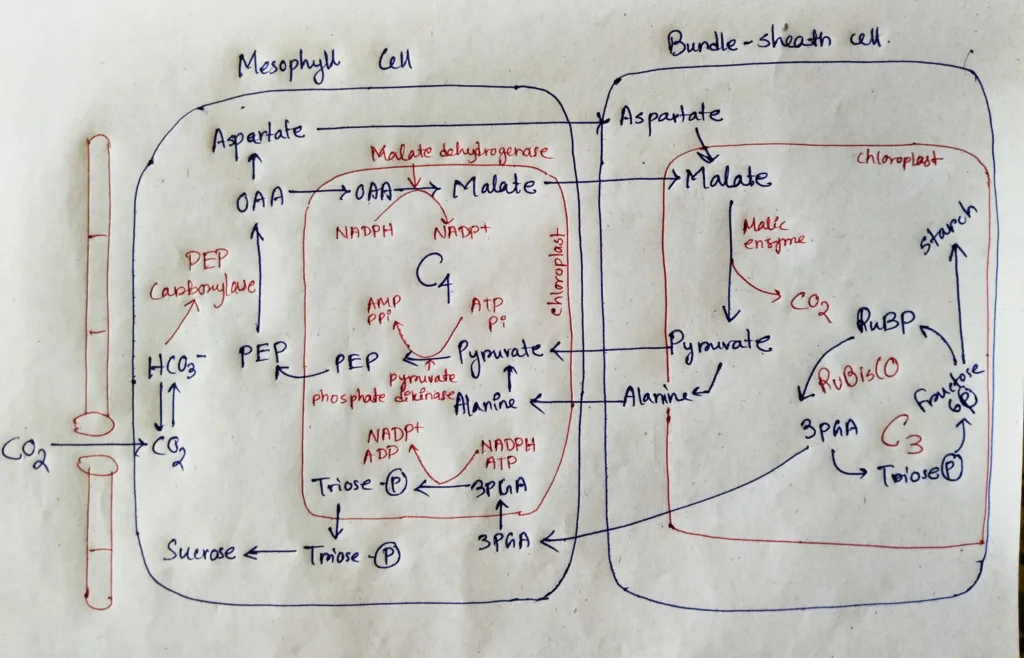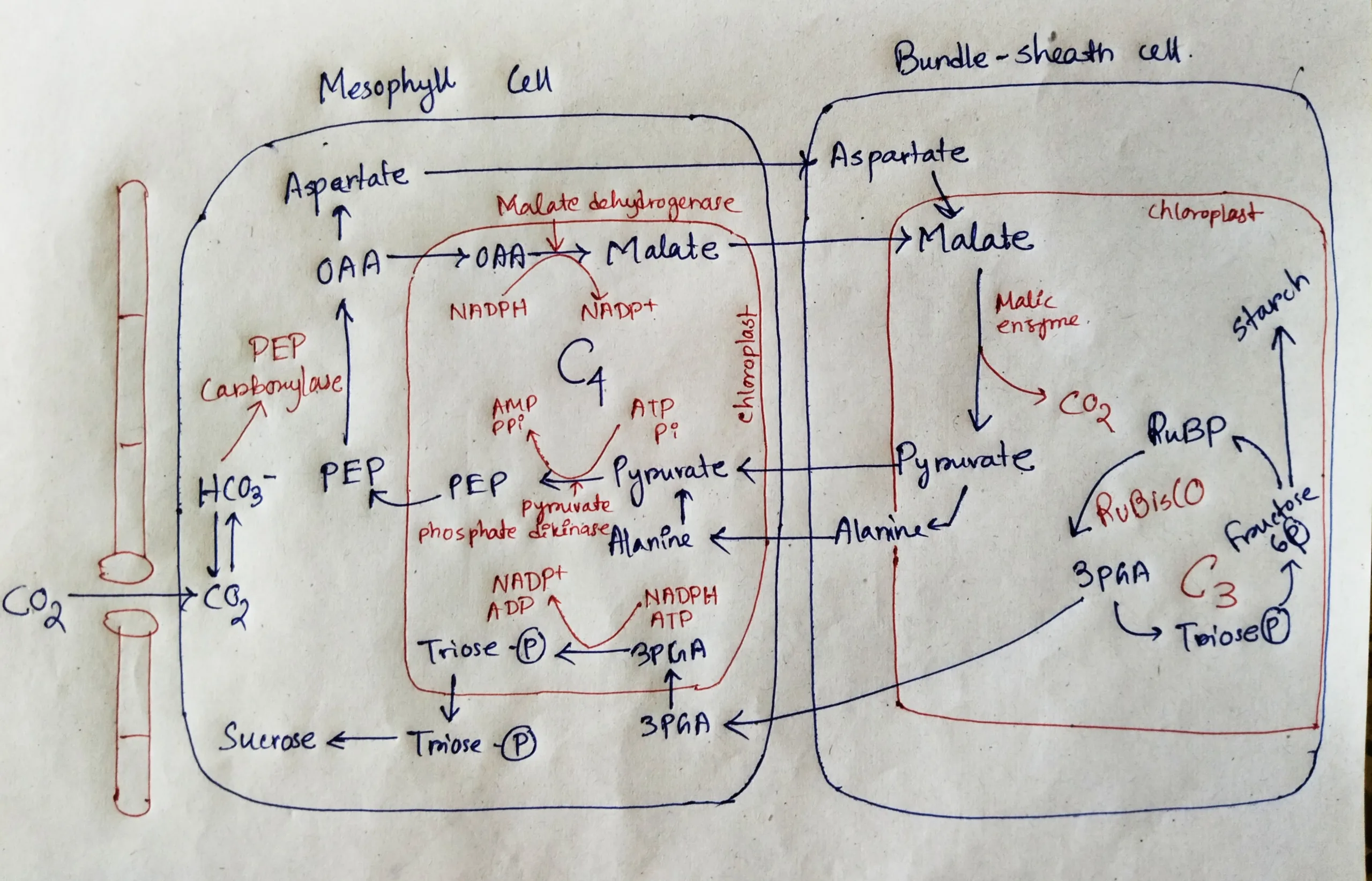Table of Contents
Hatch and Slack Pathway is referred to as the photosynthesis process in which first stable product of carbon dioxide (CO2) fixation is a 4-carbon compound, oxaloacetic acid. This is also called C4 photosynthesis.
The History Behind Hatch and Slack Pathway
Scientist Hugo Kortschak, Hartt and George Burr (1965) first reported that 4-C containing dicarboxylic acids, malate and aspartate were the major labelled products when sugarcane leaves were allowed to photosynthesize for short periods in 14CO2. This finding was confirmed and preciously elaborated by Hatch and Slack in 1967. further studies by them led to establishment of this alternate pathway of CO2 fixation and was referred to as Hatch and Slack Pathway.
Occurrence of Hatch and Slack Pathway
Besides sugarcane leaves, this pathway has been found to operate in many species of the family Gramineae e.g., maize, sorghum, etc. which are grouped together s tropical grasses and other plants e.g. Atriplex, Amaranthus etc. These are all known as C4 plants.
Mechanism of C4 cycle
- The first step involves the carboxylation of phosphoenol pyruvate (PEP) in chloroplasts of mesophyll cells to form C-4 dicarboxylic acid, oxaloacetic acid. This reaction is catalyzed by phosphoenol pyruvic carboxylase.
- PEP + CO2 + H2O ——–PEP Carboxylase——-> Oxaloacetic Acid (OAA)
- Oxaloacetic acid is then converted to aspartic acid and malic acid in the presence of enzymes transaminase and NADP+ specific malate dehydrogenase respectively.
- OAA + NADPH + H+ ——Malatedehydrogenase———-> Malic Acid + NADP+
- OAA + Glutamate —————————————> Aspartate + α-ketoglutarate
- From chloroplasts of mesophyll cells malic acid is transferred to the chloroplasts of bundle sheath cells where it is decarboxylated to form CO2 and pyruvic acid in the presence of a NADP+ specific malic enzyme.
- Malic enzyme + NADP+—————> Pyruvic acid + CO2 + NADPH + H+
- CO2 produced in this step reacts with RuBP in the presence of RuBP carboxylase and produces phosphoglyceric acid (PGA), thus entering into the Calvin cycle.
- From Bundle sheath cells pyruvic acid is transferred to the chloroplasts of mesophyll cells and is converted to phosphoenol pyruvate (PEP).
- Pyruvate acid + ATP + Pi —–Pyruvate Phosphokinase———> PEP + AMP + PPi
Brief Schematic representation of this cycle:

Characteristics of plants involving C4 cycle
- C4 plants have a unique leaf anatomy, referred to as Kranz anatomy.
- Here the vascular bundles are surrounded by outer mesophyll cells & inner bundle sheath forming a ring of cells. These cells are thick-walled, radially arranged and highly developed containing specialized chloroplasts.
- C4 acids are produced in the outer mesophyll cell layer by first carbon assimilation whereas carbon reduction to the level of carbohydrate takes place in the inner bundle sheath layer.
- Chloroplasts are of two types- a) mesophyll chloroplasts and b) bundle sheath chloroplast.
- Mesophyll chloroplasts are small, do not contain starch, and have well-developed grana. Whereas bundle sheath chloroplasts are large, contain starch, and are either agranal or with rudimentary grana.

Diagram of Kranz anatomy:

Importance of Hatch and Slack pathway
- This cycle is helpful to plants growing in dense tropical forests where there is poor supply of CO2.
- Because in these plants, there is internal supply of CO2, so these plants can survive in poor CO2 concentrations.
- Photorespiration is negligible or absent in C4 plants and present only in C3 plants. So. C4 plants are photosynthetically more efficient.
- Only C4 plants grow favorably under full summer sunlight. The optimum for C3 plants is 70% of full sunlight.
- They can tolerate saline conditions due to abundant occurrence of organic acids in them.
- They are more efficient in picking up CO2 even in low concentration. Therefore, the rate of carbon assimilation is almost double the rate of most efficient C3 plants.
- Normal atmospheric oxygen concentration is inhibitory to C3 plants while C4 plants grow optimally at this concentration.
- C4 plants transpire less and are more efficient in conserving water than most of C3 plants.
- C4 plants perform photosynthesis even when their stomata are closed.
Schematic representation of this pathway in detail

Other related notes:
- Photosynthesis equation explanation: https://thebiologyislove.com/photosynthesis-equation-and-reactants/
- Light reaction: https://thebiologyislove.com/light-reaction-of-photosynthesis/
- Dark reaction or C3 cycle: https://thebiologyislove.com/calvin-benson-cycle-or-dark-reaction/
- Photorespiration or C2 pathway: https://thebiologyislove.com/photorespiration-or-c2-pathway/
Facebook Link: https://www.facebook.com/share/p/XVfiPScCXaWa92vN/?mibextid=oFDknk
Instagram link: https://www.instagram.com/p/C6N3GNcRcXn/?igsh=MTJ1cHhyeDE1eTY4Yg==

